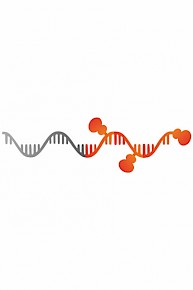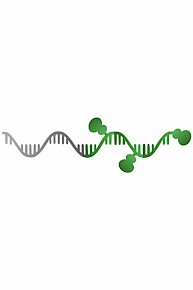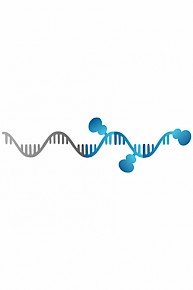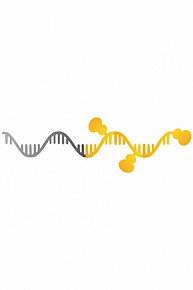|
View in web browser
|

|
 |
 |
Newsletter 06/2020
|
 |

|
 |
 |
New XCyting RNA Probes from MetaSystems...MetaSystems Probes is proud to present our new product line “XCyting RNA Probes” (XRNA)! In contrast to our locus-specific XL probes, XRNA probes do not hybridize to genomic DNA targets but hybridize to RNA. This way, XRNA probes enable expression analysis of genes on the RNA level, including analysis of the subcellular distribution of RNA. Automation and quantification can be provided by MetaSystems’ slide scanning platform Metafer. Download our product flyer (PDF) for further information. The outbreak of Covid-19 has led to global efforts to understand the mechanisms of the virus-induced disease and to find effective countermeasures. In this context, MetaSystems Probes joined forces with RNA-FISH specialist PixelBiotech for development of highly sensitive and specific SARS-CoV-2 probes. The innovative HuluFISH technology allows for a very efficient fluorescent labeling of DNA oligonucleotides. The proprietary enzymatic labeling technique allows attachment of multiple fluorophores, enhancing the fluorochrome density and thus fluorescence intensity. In combination with our powerful probe design strategy, this resulted in our high performance XRNA FISH probes. XRNA SARS-CoV-2 consists of 96 oligos detecting the spike (S) glycoprotein mRNA of SARS-CoV-2 and a portion of the viral ORF1 mRNA. This probe can be used to specifically detect SARS-CoV-2 RNA in fixed tissue samples, infected host cells, or spike protein-expressing cell lines. XRNA ACE2 and XRNA TMPRSS2 allow assessment of transcription levels of the human ACE2 receptor, facilitating viral attachment to the host cell, and TMPRSS2, a cellular protease enabling fusion of host- and viral membrane via priming of the viral S protein. Our XRNA PGK1 hybridizes to mRNA of PGK1, a housekeeping gene commonly utilized for normalization in gene expression studies. XRNA PD-L1 can be used to analyze the RNA expression of the transmembrane protein PD-L1, which is also used as a biomarker in cancer. Note: XRNA probes are research use only (RUO) products and not intended for diagnostic procedures. XRNA probes are powered by HuluFISH technology from PixelBiotech.
|
 |
 |

|
 |
XRNA SARS-CoV-2, orangeR-0101-020-OR The XRNA SARS-CoV-2 probe kit comprises 96 oligos detecting the spike glycoprotein mRNA of SARS-CoV-2 and a portion of the viral ORF1 mRNA. We are using the proprietary HuluFISH enzymatic multi fluorophore labeling technique enabling the detection of RNA at the single-cell, single-molecule level in cell and tissue samples. The probe kit is labeled in orange (Atto565). XRNA SARS-CoV-2 opens up manyfold possibilities for COVID-19 research: Semi-quantitative virus identification on a cellular level, application in pre-clinical studies for vaccines and therapeutics and analysis of cell-, tissue-, and organ-tropism are some examples of the possible applications. And the list goes on: analysis of the cell response to infection, analysis of sub-cellular RNA distribution, analysis of the end of infectivity and more! Depening on the application and the research interest, this probe can be combined with XRNA ACE2 and/or XRNA TMPRSS2, due to the differential labeling of our XRNA probes (please see sections below). Download fact sheet (PDF) for further information.
|
|
XRNA ACE2, greenR-0201-020-FI The XRNA ACE2 probe kit comprises 96 oligos detecting the human ACE2 mRNA. We are using the proprietary HuluFISH enzymatic multi fluorophore labeling technique enabling the detection of RNA at the single-cell, single-molecule level in cell and tissue samples. The probe kit is labeled in green (Atto488). XRNA ACE2 is an ideal complementary probe to XRNA SARS-CoV-2: The viral S protein binds to ACE2 on the host cell surface, facilitating viral attachment. ACE2 is pleiotropically expressed, including but not limited to the lung, gastrointestinal tissue, testes, and kidneys. Studies have shown that cell entry of the related virus SARS-CoV is followed by downregulation of ACE2. As both viruses utilize the same cell entry mechanism, the ACE2 downregulation is now being suspected to apply to SARS-CoV-2, too. Given the cardio- and lung-protective role of ACE2, this could be a cause of cardiac dysfunction and exacerbated lung damage in COVID-19 patients. Combining XRNA ACE2 and XRNA SARS-CoV-2 enables ACE2 expression level analysis, before, during and after viral infection and could even be complemented with RNA localization analysis. The probe could also be used to investigate cardiovascular issues that require visualization and/or quantification of ACE2 mRNA. Download fact sheet (PDF) for further information.
|
 |

|

|
 |
XRNA TMPRSS2, aquaR-0202-020-BL The XRNA TMPRSS2 probe kit comprises 96 oligos detecting the human TMPRSS2 mRNA. We are using the proprietary HuluFISH enzymatic multi fluorophore labeling technique enabling the detection of RNA at the single-cell, single-molecule level in cell and tissue samples. The probe kit is labeled in aqua (Atto425). XRNA TMPRSS2 is an ideal complementary probe to XRNA SARS-CoV-2: The second step of SARS-CoV-2 host cell entry is priming of the viral S protein by the cellular protease TMPRSS2. S protein priming enables membrane fusion and therefore cell entry. This key role in SARS-CoV-2 pathogenesis makes TMPRSS2 expression and activity interesting candidates for targeted COVID-19 therapies. Combination of XRNA SARS-CoV-2 and XRNA TMPRSS2 allows the simultaneous analysis of TMPRSS2 and SARS-CoV-2 RNA in infected cells or tissues. The probe could also be utilized in the research field of prostate cancer, where TMPRSS2 shows high expression and is associated with tumor cell differentiation. Download fact sheet (PDF) for further information.
|
XRNA PD-L1, greenR-0203-020-FI The XRNA PD-L1 probe kit comprises 96 oligos detecting the human PD-L1 mRNA. We are using the proprietary HuluFISH enzymatic multi fluorophore labeling technique enabling the detection of RNA at the single-cell, single-molecule level in cell and tissue samples. The probe kit is labeled in green (Atto488). XRNA PD-L1 allows the detection and quantification of PD-L1 mRNA: PD-L1 and its receptor PD-1 are part of an intensively studied immune checkpoint, which plays a critical role in physiological processes, but also in the pathogenesis of certain types of cancer. While the PD-1/PD-L1 axis plays an important role in the physiological prevention of inflammatory responses (e.g. maintenance of the 'immune privileged' status of certain tissues), pathologically elevated levels of PD-L1 can also mediate oncogenic processes leading or contributing to some types of cancer. The list of possible applications for this XRNA probe is long, which is even reinforced by modern anti-cancer immunotherapy methods directly targeting PD-1 or PD-L1. The probe could also be utilized for immunological research in the field of pro- and anti-inflammatory processes. Download fact sheet (PDF) for further information.
|
 |

|

|
 |
XRNA PGK1, near infraredR-0204-020-IR The XRNA PGK1 probe kit comprises 96 oligos detecting the human PGK1 mRNA. We are using the proprietary HuluFISH enzymatic multi fluorophore labeling technique enabling the detection of RNA at the single-cell, single-molecule level in cell and tissue samples. The probe kit is labeled in near infrared (Atto647N). XRNA PGK1 is provided as housekeeping gene probe for normalization of RNA levels detected by XRNA probes: PGK1 is a commonly used housekeeping gene utilized in gene expression analyses, for example in real-time reverse transcription PCR assays. Housekeeping genes are commonly used to normalize expression values of analyzed genes in gene expression assays. However, it has become clear that the expression levels of housekeeping genes can show considerable variation, depending on the experimental conditions and analyzed tissue. PGK1 has been shown to be a stably expressed housekeeping gene for performing expression studies of leukocytes. Depending on the research interest, the probe could also be used for biochemical studies analyzing cellular metabolism. XRNA PGK1 could also be applied in cancer research focusing on the pathological role of PGK1. Download fact sheet (PDF) for further information.
|
|
 |
 |

|
|
 |
|
|
 |
|